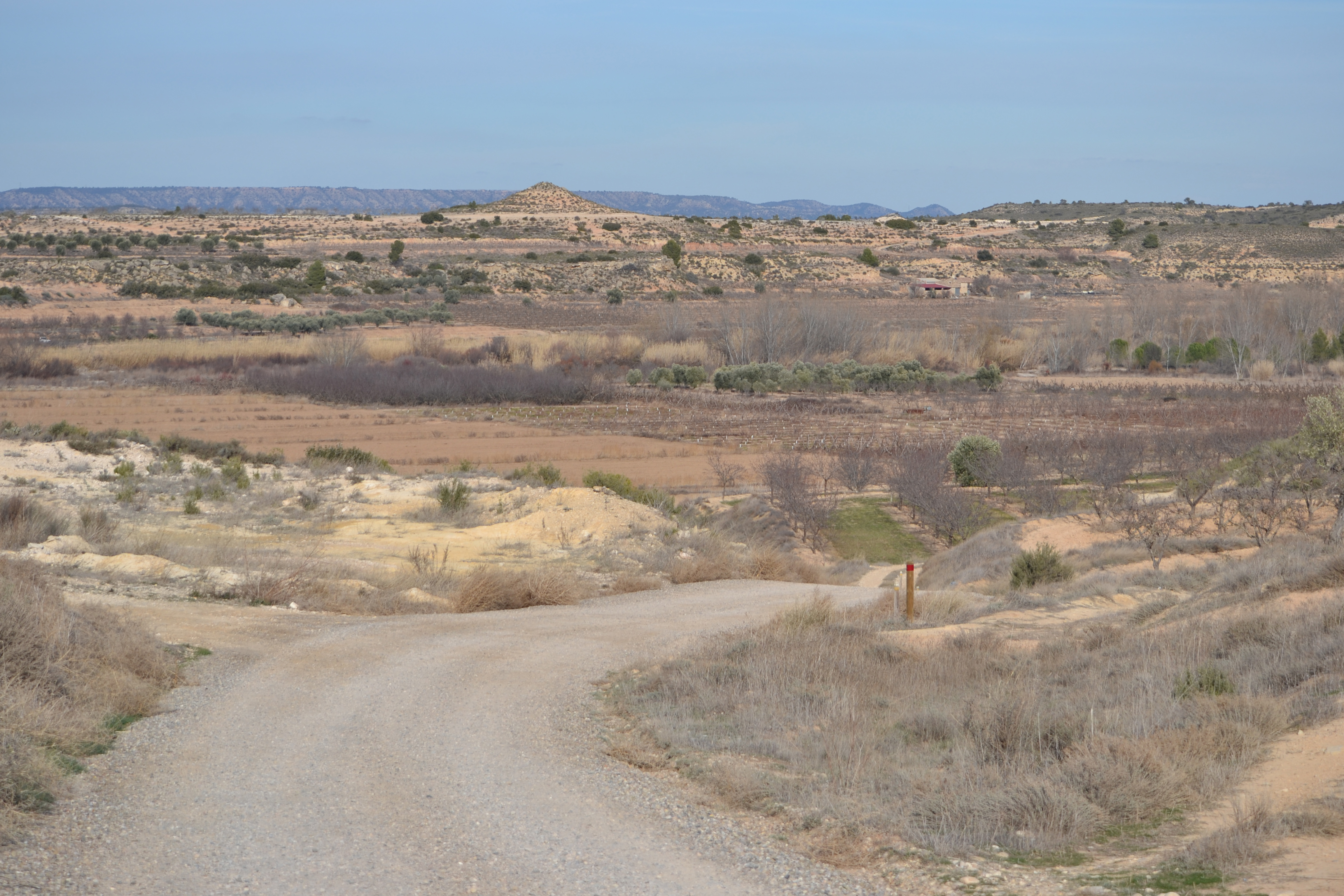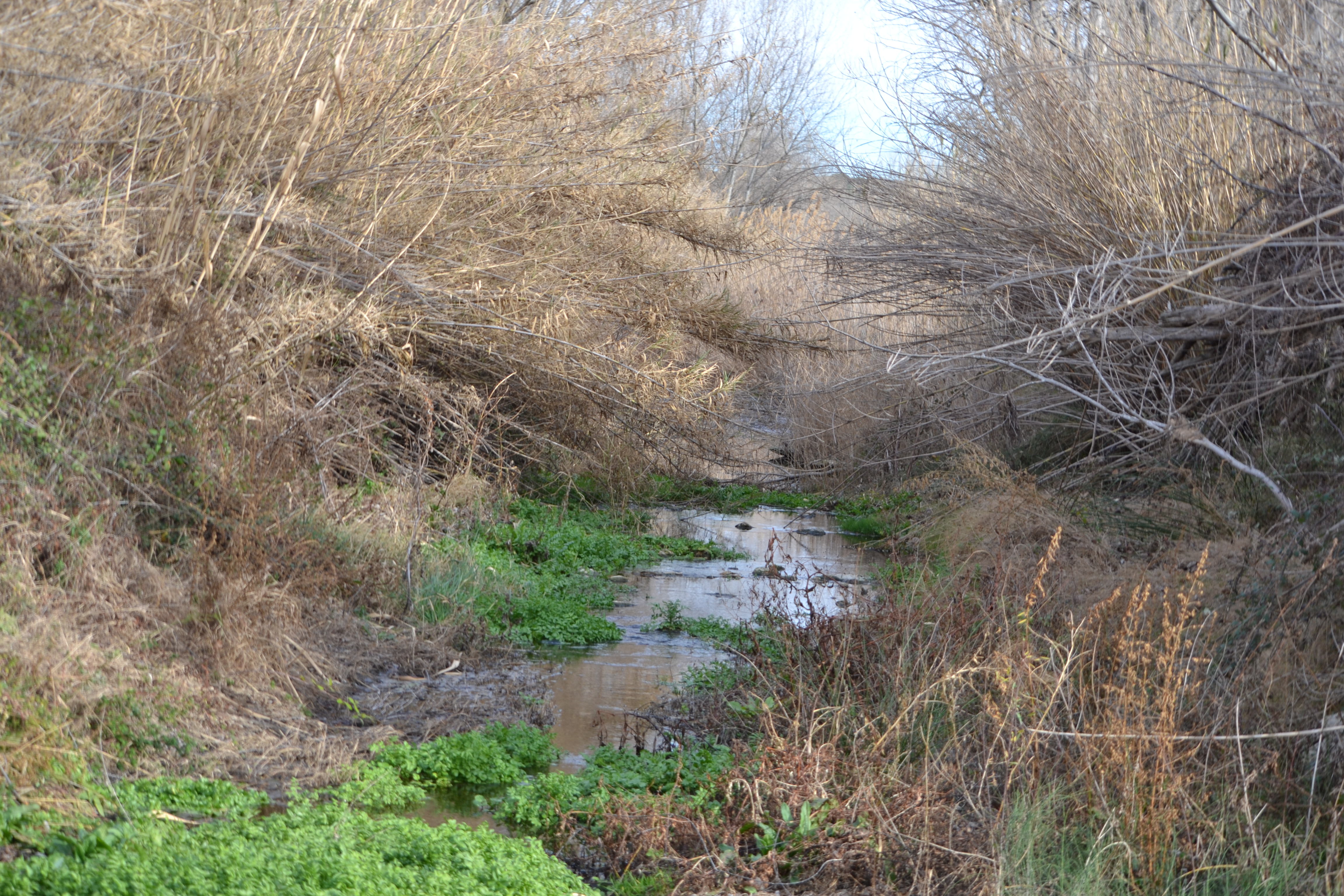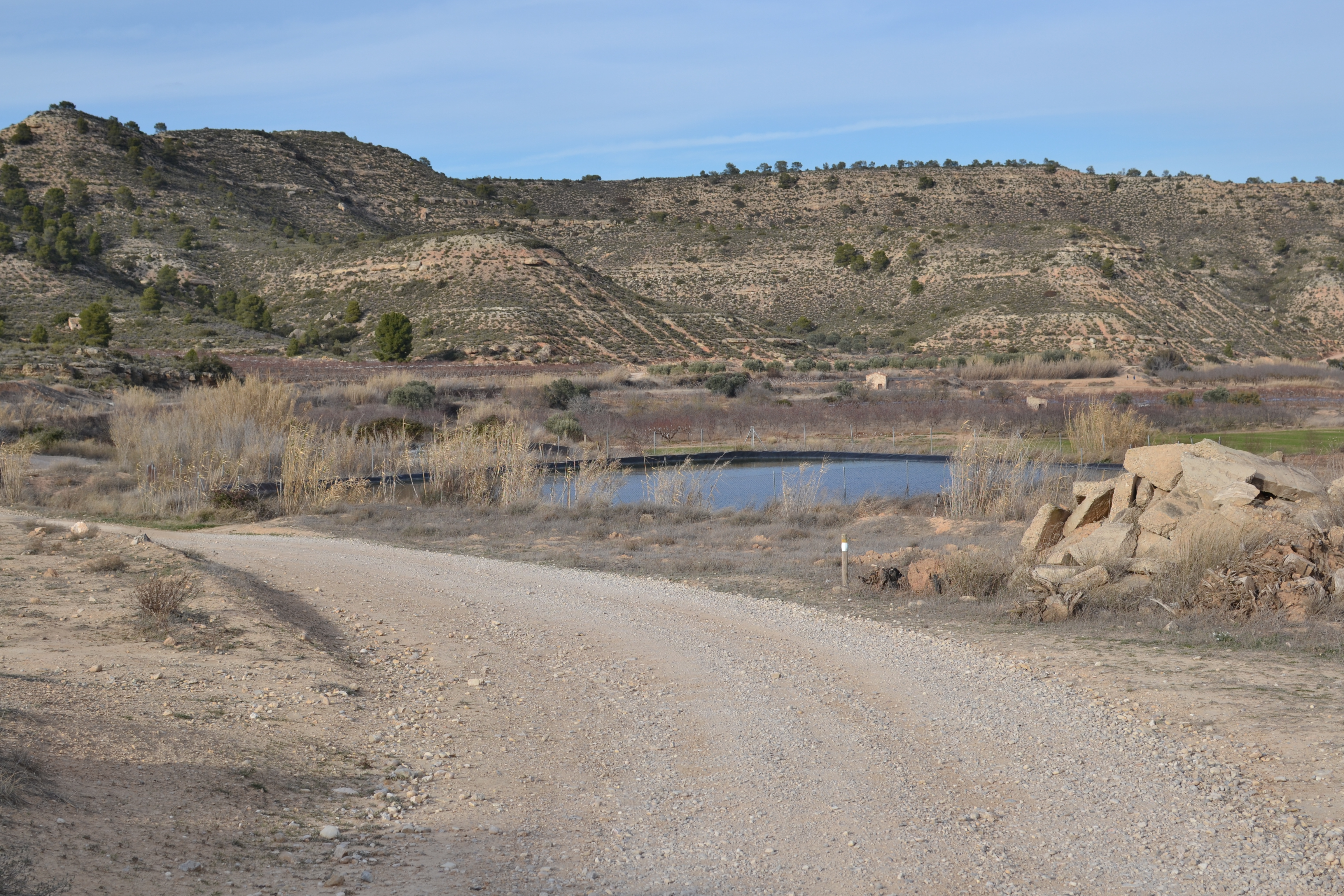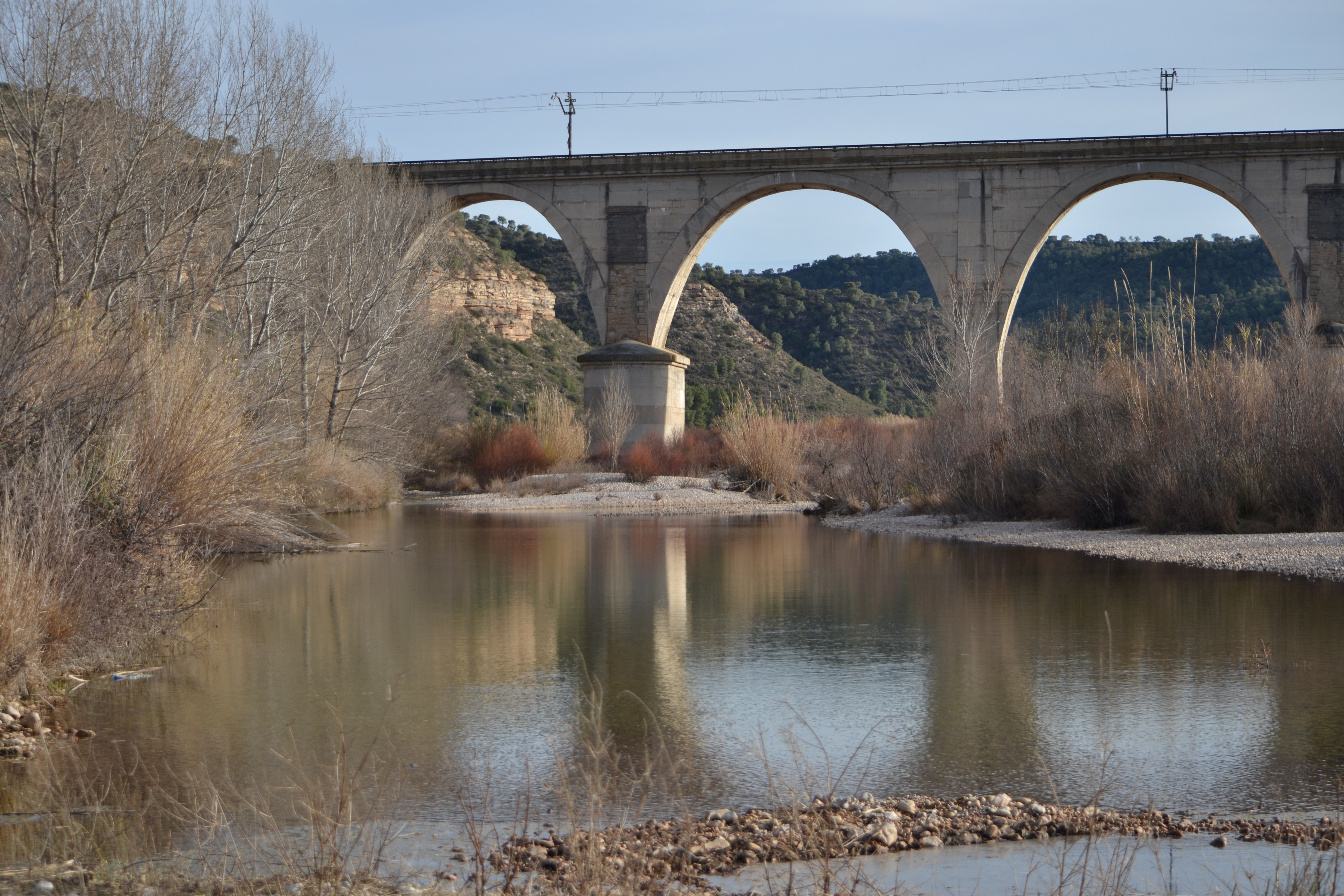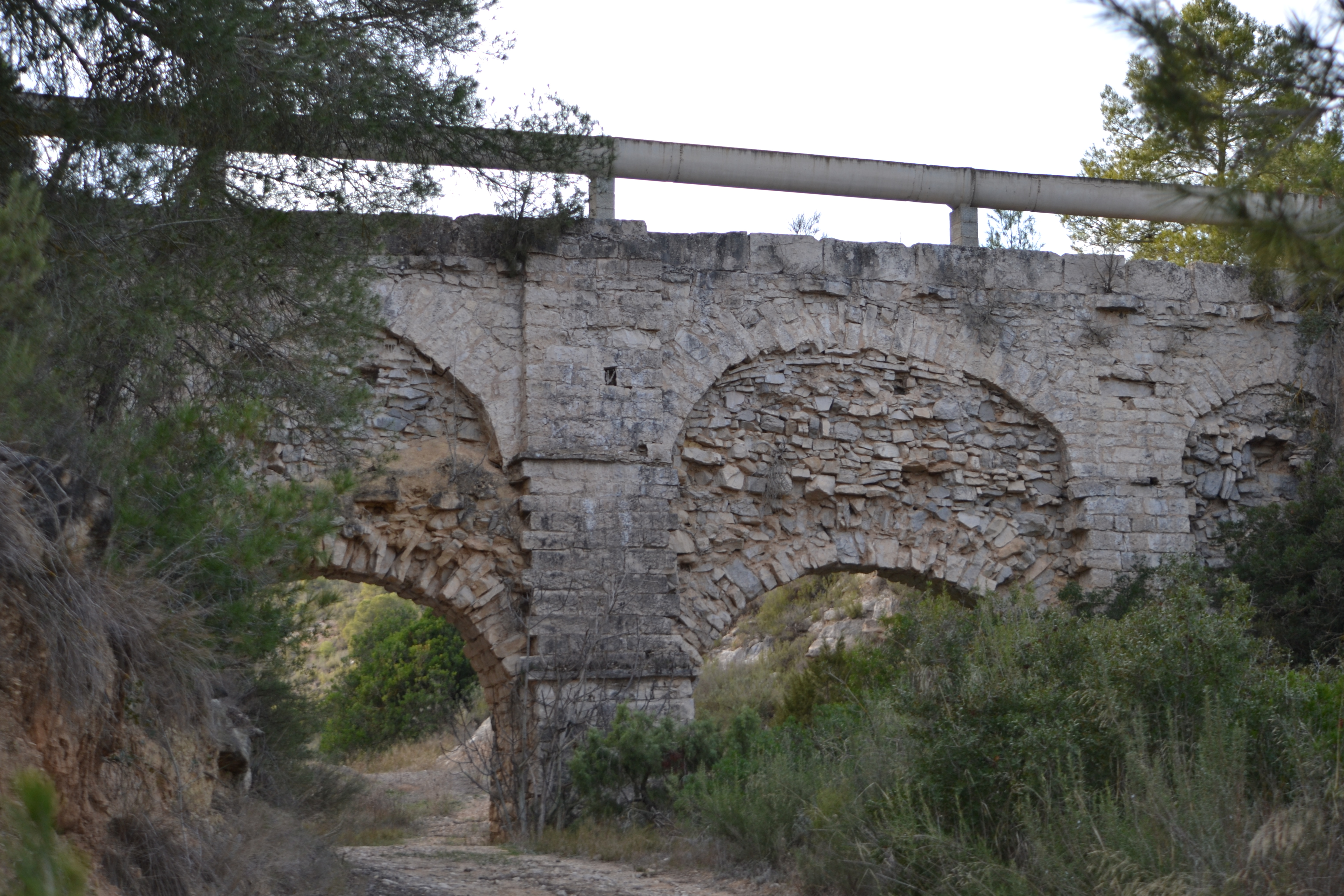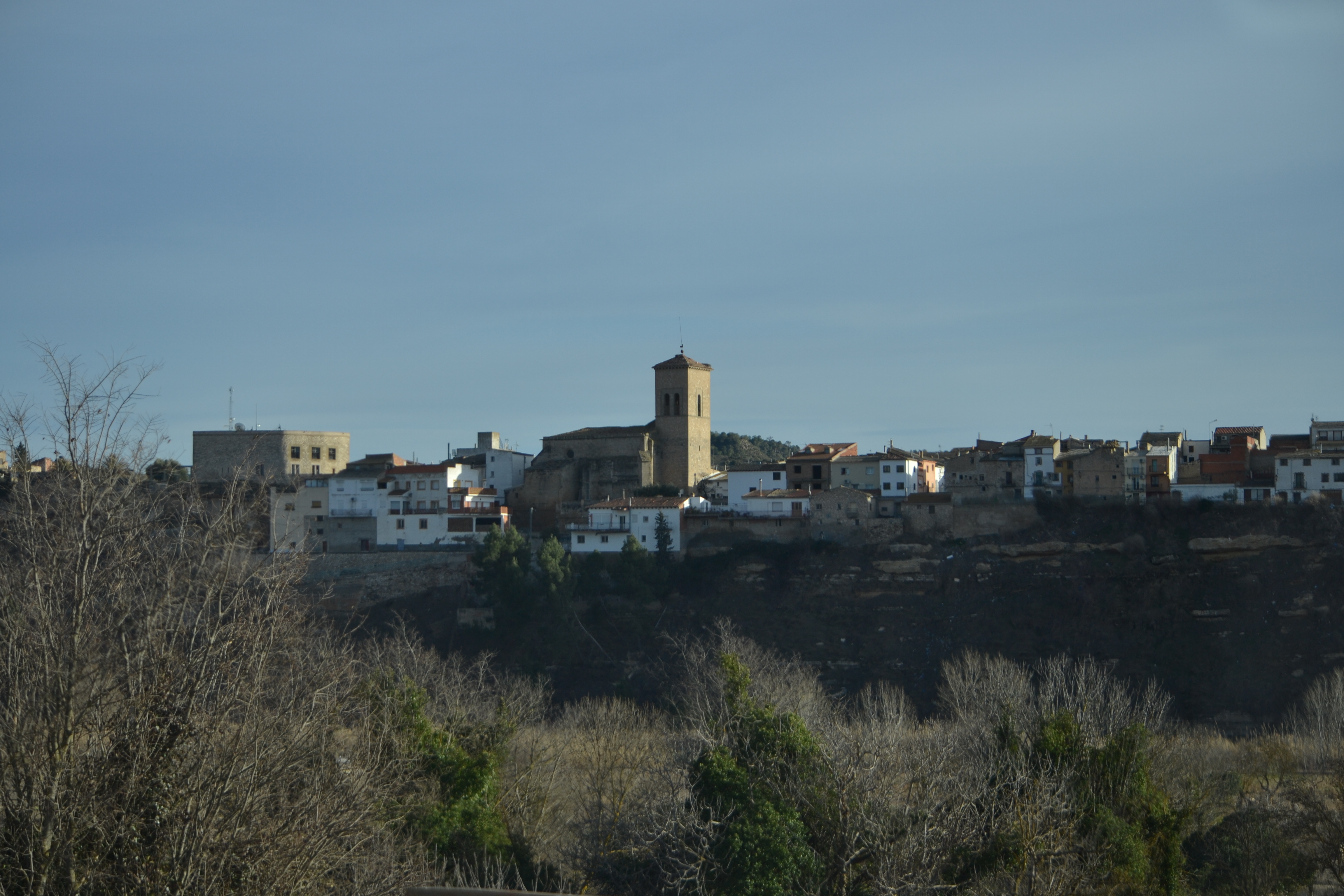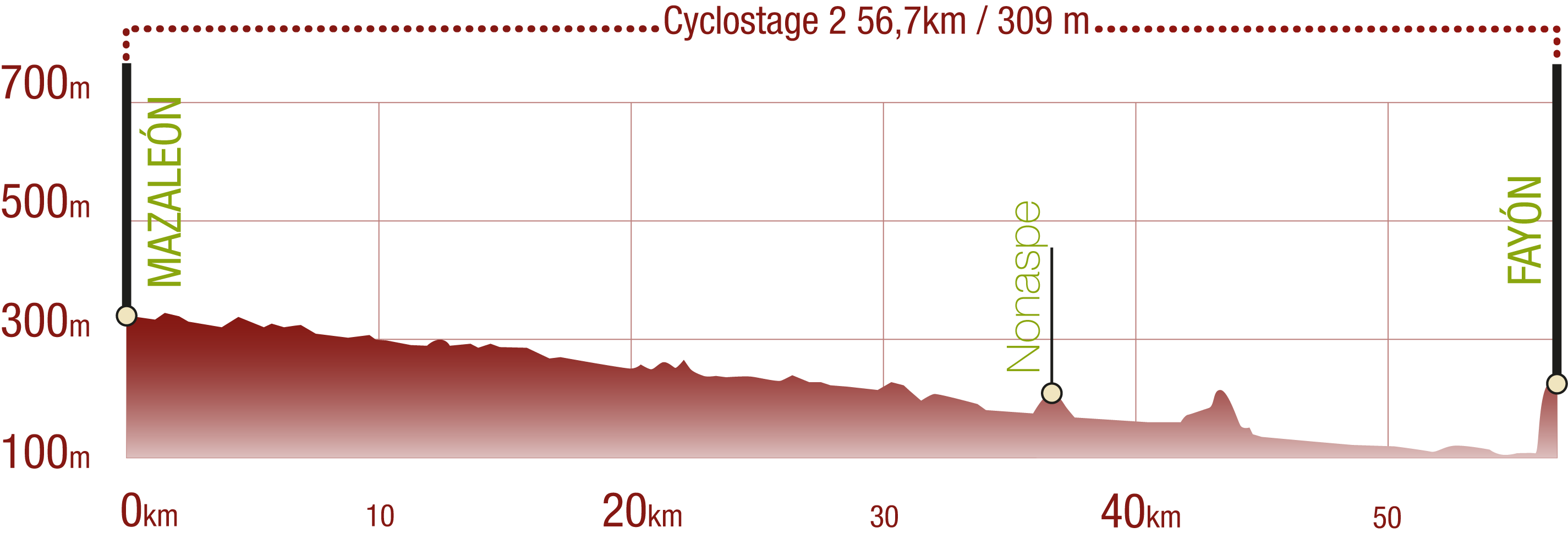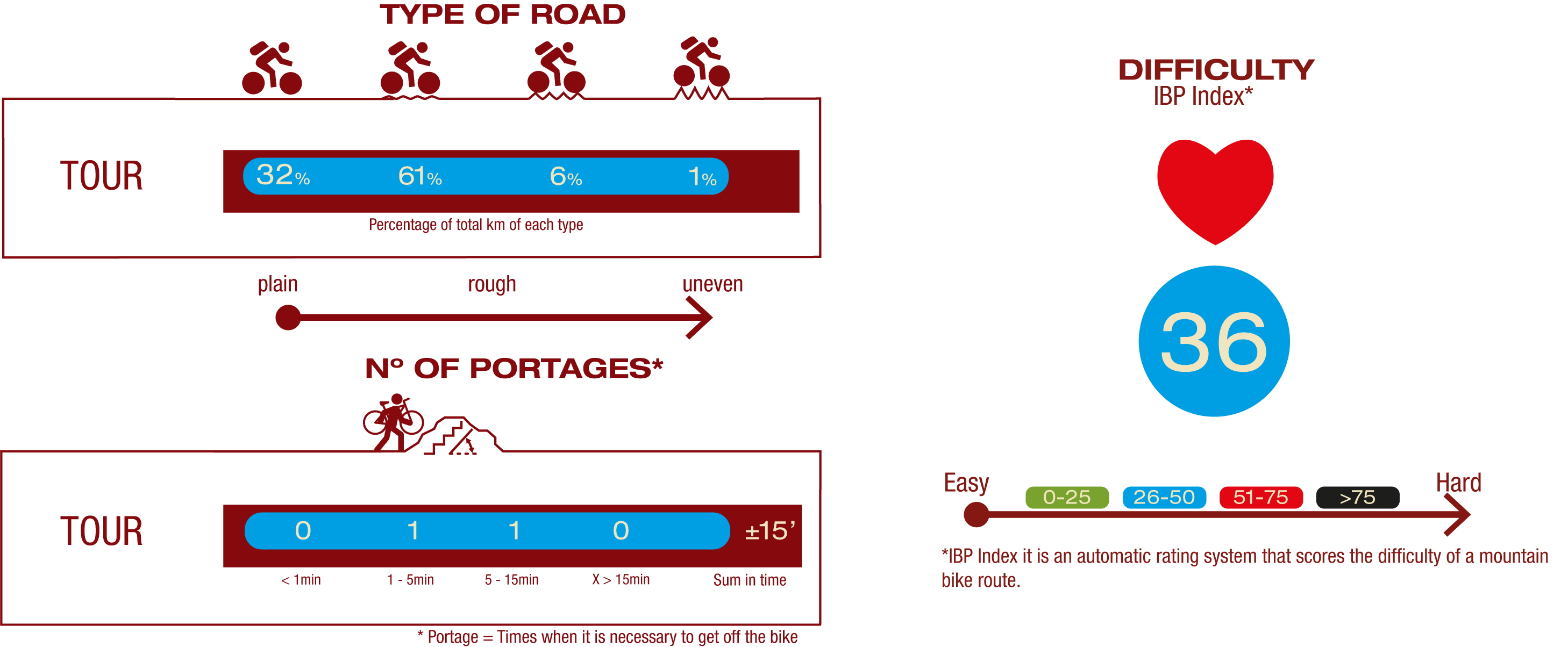- Home
- Rural Development
- Nature Trails
- Nature Trails
- Northeast Sector
- Matarranya Algars
Stage 8. Fabara–Nonaspe
Description

The most agricultural River Matarraña : crops, irrigation ditches and irrigation pools.
Travel through an essentially agricultural environment, thanks to the great floodplain of the river Matarraña throughout this stage in Zaragoza. The trail goes from the town of Fabara to Nonaspe, a town which was built just where the Matarraña merges with another river which lends its name to this Nature Trail: the river Algars.
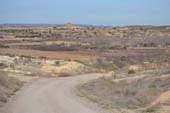
Fabara is left, circling it on its north-eastern side following the A-2411, without entering the town. Although the first hundred metres are still on streets of the town, care must be paid as some 200 m must be walked on the roadside, before heading to the left, following the signs for the nature trail.
After passing the ecological wastewater treatment plant, and once again on the rural trails, the landscape turns back to olive groves, willows and fruit crops, and Mediterranean scrubland on the high areas. Without further ado, the route continues until it meets the river, which becomes wider in this section, although it is not always very full. After a few metres running parallel to the river, this can be crossed by a concrete crossing in an area with an abundance of vegetation (reeds, brambles, willows and swamplands are covered in aquatic plants).
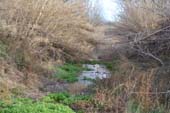
On the other side of the river, after turning right, the trail carries on for nearly a kilometre completely surrounded by tree crops, until it reaches the foot of the mountain. Here the trail starts to follow a series of meanders of the river Matarraña, with its plains being widely used for agriculture, as is evidenced by the numerous water supplies and the company of the Fabara canal in the first section, and the Menfalla canal afterwards.
When there is a gap in the vegetation, on the other side of the river you can see the rocky walls which the river Matarraña's floodplains spread between.
After going past a large irrigation pond, the trail enters a crop land full of fruit trees, with a distant view of the viaduct built for the Zaragoza-Caspe-Barcelona railway which crosses the river to head towards the mountain.
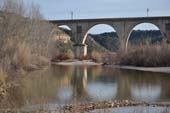
The trail reaches this railway, but takes a path below it. On the other side, at a crossing, take the right hand trail, which heads down to the river again. From there, there is a clearer view of the viaduct.
After crossing the river over a concrete crossing, the trail goes around a hill, among olive groves, to reach the railway and pass underneath it once again. In the distance, the town of Nonaspe can start to be made out.
This last section passes between the mountain and the river, which has whimsical shapes in its water bed. With the Sot canal on the right hand side, an aqueduct can be seen which takes the canal over a ravine. New fields of crops welcome you to Nonaspe, which is reached after a gentle incline among pine trees and holm oaks. Here, stage 8 comes to an end in the high point of the town, where the streets Calle de Maella and Avenida de Cataluña merge together. From here it is possible to head towards Fayón (stage 9), or to Caseres, continuing along the long stage 10.
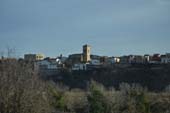
The town hall of Nonaspe particularly stands out, located in the reformed castle of Encomienda. This is a 14th-15th century building with modifications from the 18th century, although some elements from the 12th century may still be preserved. The parish church of San Bartolomé is also worth a visit. This is a 12th century Gothic building which is probably one of the oldest in the county. Due to where in the town these two buildings are located, they also act as a wonderful viewpoint over the valley of Matarraña.
Sites of interest
Map
Puntos de Interés
Profile
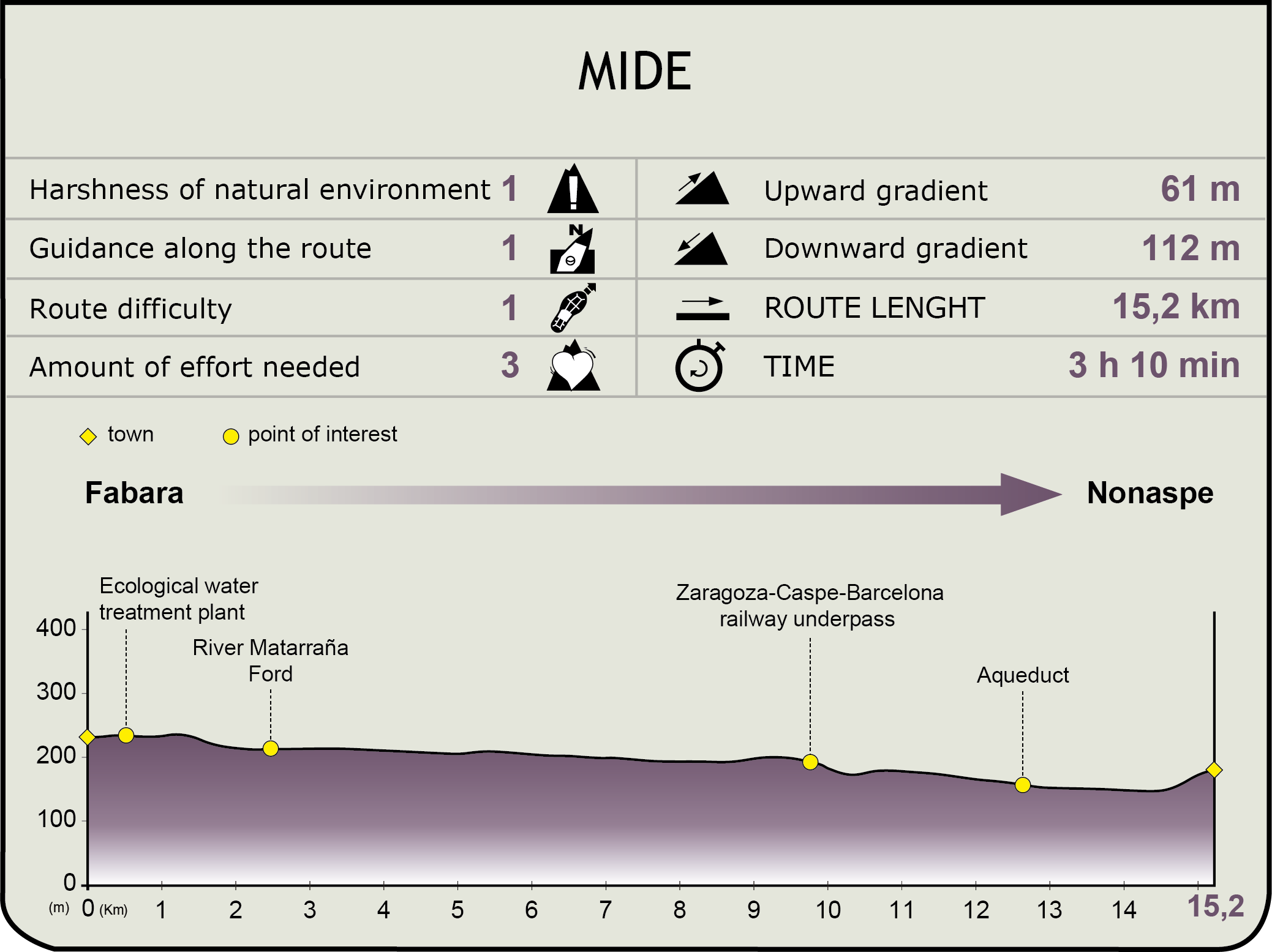
MIDE (Method for the Information of Excursions)
Featured
Further information
Fabara
Municipality located in the county of Bajo Aragón-Caspe, on the right bank of the river Matarraña. Despite its name having Berber origins (from the Hawwàra tribe), there is evidence of important Epipalaeolithic settlements, such as Roquizal del Rullo (one of the most important Iron Age settlements in Aragón). In addition, in the area one of the best examples of the Roman Empire's funeral architecture has been conserved; the Mausoleum of Fabara (see previous stage).
The current settlement dates back to the arrival of the Moors, passing into the hands of the Order of Calatrava after the Christian reconquest until 1428.
Out of the historic-artistic heritage of the urban centre, highlights include the Gothic, fortified church of San Juan Bautista (15th century), built on top of a pre-existing Roman church, and the palace of the Princess of Belmonte, which currently houses the town hall of Fabara and the Virgilio Albiac painting museum, a painter from the town. The town’s most characteristic traditions include the Jota de Fabara and the Polinario dances.
Nonaspe
The municipality of Nonaspe, in the Zaragonzan county of Bajo Aragón-Caspe, is located in a privileged landscape in which the Rivers of Algars and Matarraña come together. That is how the 17th century temple, the Virgen de Dos Aguas [Virgin of the Two Waters] shrine took its name.
Elements that stand out in the heritage of Nonaspe also include: the San Bartolomé church, a 13th century Gothic church built on top of a pre-existing Roman temple; the Castellet de Faió, a watch tower from the Carlist Wars; and the town hall, located in a 15th century palace that took the place of an old medieval castle.
Nonaspe has been inhabited since ancient times, which can be evidenced by the numerous Neolithic settlements in the municipality. There are also cave paintings at Les Tres Roquetes, possibly from the Bronze Age, and a couple of Iberian settlements.
Multimedia
Downloads
GPS Downloads
Maps
Cyclability
TYPE OF ROAD, PORTAGES & DIFFICULTY
SAFETY RECCOMENDATIONS
- Sections shared with hikers.
- Transit through the centre of some population centres.
- Due to the fact that the route runs close to riverbeds, crossing them on several occasions, you are informed that there may be seasonal discontinuities caused by floods, increases in flow, floods or transit through flood-prone areas.
GENERAL RECOMMENDATIONS
- Find out about the technical aspects of the route and the weather on the day.
- Take care of the environment. Take care not to disturb animals or damage vegetation. Respect private areas.
- You must give priority to pedestrians and comply with general traffic rules.
- The environment in which you will be riding is open, free to move around and an area where many activities are carried out (sporting, forestry, livestock and agricultural activities). Always have an understanding, prudent, responsible and respectful attitude.
